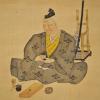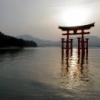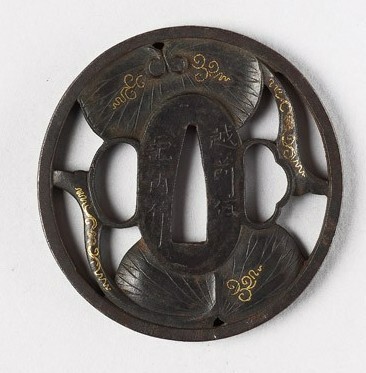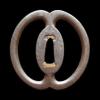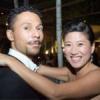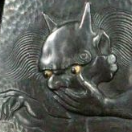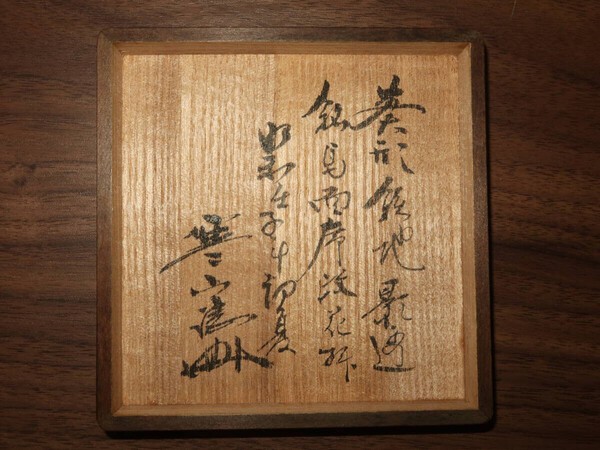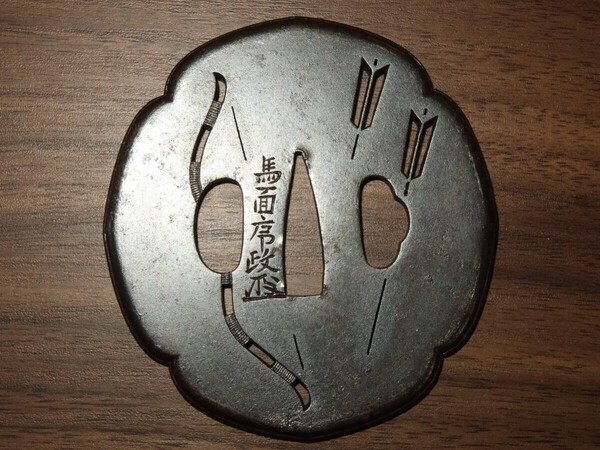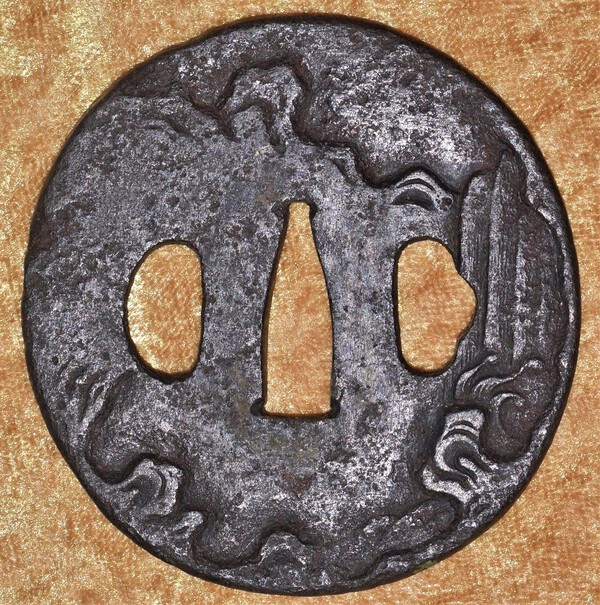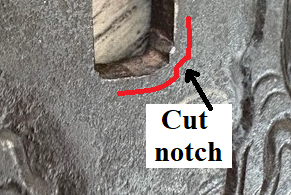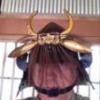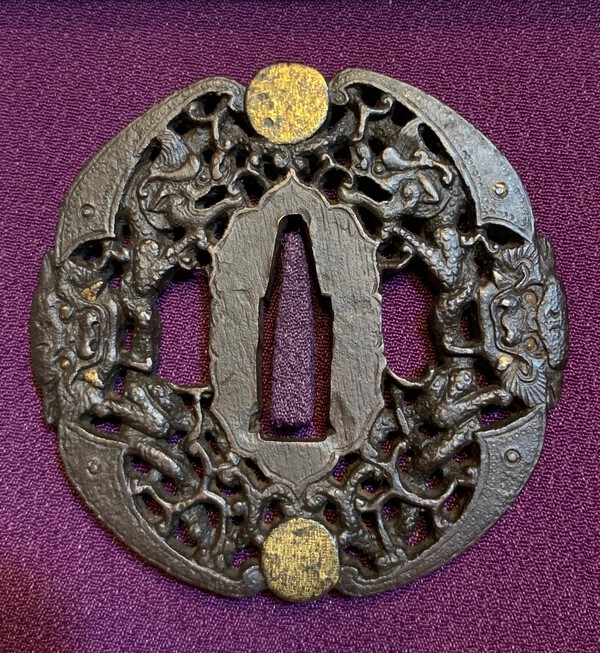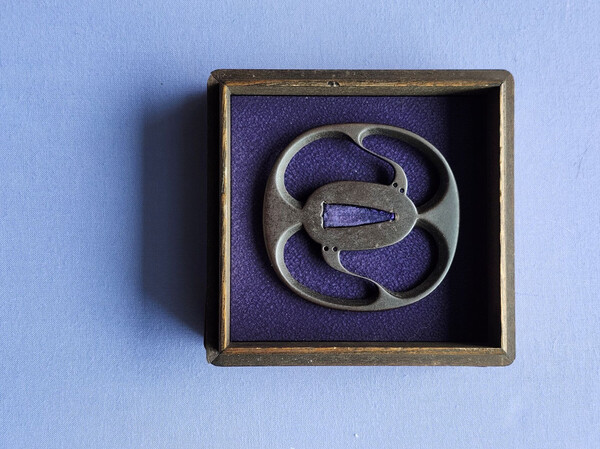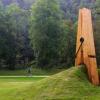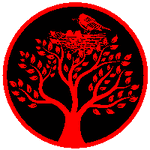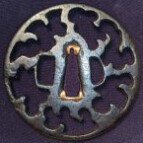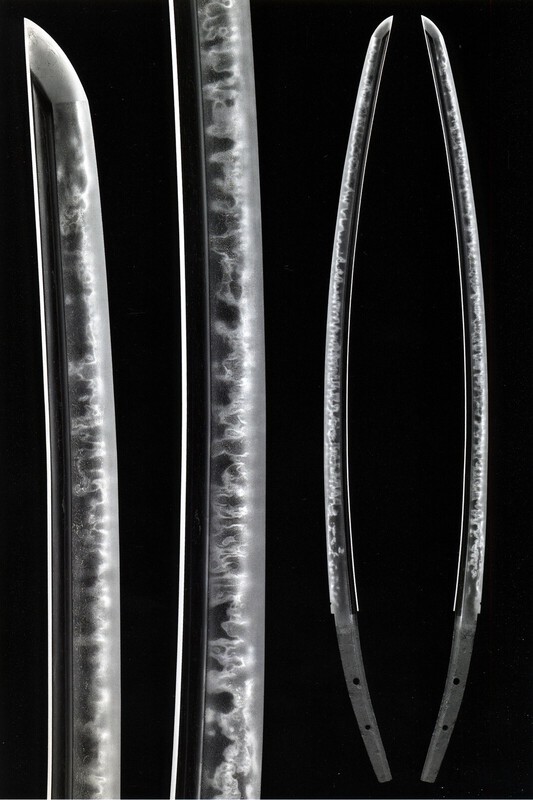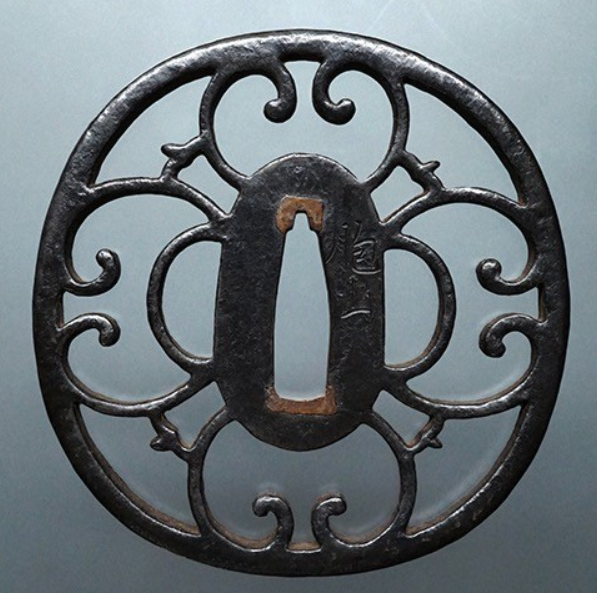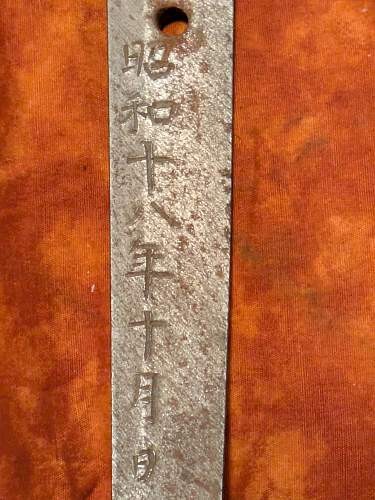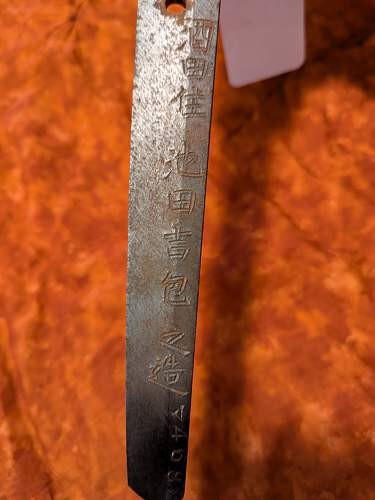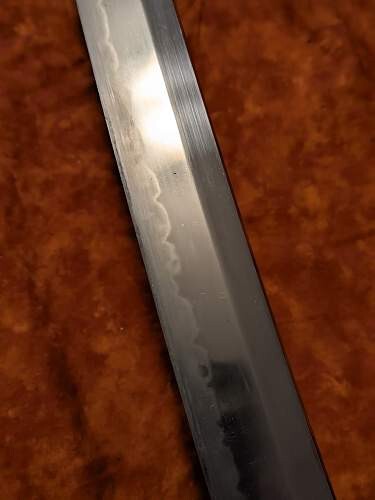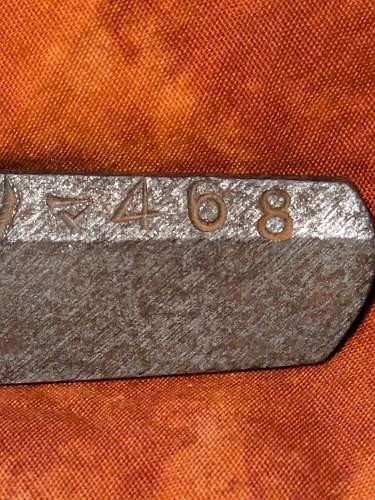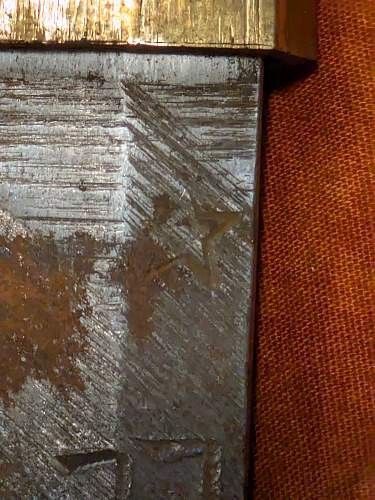Leaderboard
Popular Content
Showing content with the highest reputation since 10/03/2025 in Posts
-
"Japanese aesthetics though are more tricky to understand and are not just "in the eye of the beholder", which is a silly Western concept" I'm curious about this. Could you elaborate? (Jeff) A question to write a book about, but I will try: Japanese swords were not made in a vacuum. The sense for their appreciation and beauty is embedded in a culture long gone and hard to understand even for (modern) Japanese people. Even more so for us Westerners. Usually we tend to enjoy and acclaim features we can easily recognize and understand within the perimeters of our cultural background. An example for this attitude on a very high level: Etchu NORISHIGE is considered a top-swordsmith within Soshu-style of sword-making for good reasons. Western collectors are crazy about his works, for their contrast in jihada and their obvious hataraki are so spectacular. But old Japanese connaisseurs considered his work clearly inferior to MASAMUNE's and SADAMUNE's. Why? Because of its lack of dignity! "What does that suppose to mean: dignity? In 2025 we are living in a world stripped of pride and dignity! Let's make ourselves shine by all means possible." Well, samurai's aesthetics didn't work that way. My advice: Learn the difference between "aki ni sae" and just brightly shining nioi on a hamon. Furthermore study Japan's history and craftsmanship, especially paintings, sculpture, calligraphy and even everyday objects. It is a long way to go, but it is very helpful to understand appreciation of Nihon-To. reinhard9 points
-
.."I felt a sense of shock from which I never recovered..." Exactly—this is what I hoped to touch upon earlier. Call it bottom-up processing, a first-order experience, epiphany, shock, ... or use Scotus's definition (props to Mushin—cut to the bone ); it is a visceral experience that happens to you, a unique connection between the object and the observer, the gaze outward becomes a gaze inward ("du gleichst dem Geist den du begreifst"). If this can be learned, it likely comes closest to the concept of "Ishin-denshin", where the teacher acts more as a catalyst for the student, setting their process of self-understanding into motion (or elevating it to a new level). (Perhaps this was the role Darcy played for some forum members; at least, I got the impression that he was a good soul.) Then, it seems to me that there is at least a second, very interesting central path of top-down processing: the study of primary and secondary literature, the field of quote assemblage, hearsay, and the translators and autistic data collectors and data enthusiasts (I have the utmost respect for them). But also, and most importantly, the realm of fiction, self-worth, and the social sphere—in short, chaos. The social sphere, in my view, distinguishes the question of aesthetics (i.e., mastery) from questions about for example the essence of time or love. Aesthetics can, and often does, quickly become a socially constructed product. It can be easily manipulated and stretched. In this regard, the social dimension in the question of what is considered beautiful seems particularly relevant in a collectivist country like Japan. I would also place the following contribution here: ..."Paul relates that Albert Yamanaka held the opinion: Noda Hankei's arrogance was responsible for the blunt gracelessness of his shapes." Objective influences fade into the background, and the value of a work / a blacksmith becomes closely linked to the behavior of the social actors of the time— as well as the market, critics, curators, collectors, dealers, ... The exchange relationships between these actors play a decisive role, as they create an informal socialization around rules, trends, and the language of the market. Such network effects, especially in Japan, play a crucial role in the development of a smith’s reputation and how it is perceived in the market, an aspect I’ve so far given too little attention to, but I hope to engage in more exchange about. Specific signals, like positive evaluations by experts (the Honami family and their repeated crises of trust), protégés, peers, provenance, and familial relationships, imply a higher value. Must a sword be of higher quality just because it was owned by a famous Daimyo? The status of a smith or an artwork is negotiated through such exchange processes. This means that if a blacksmith had a great need for recognition, the ability to stage himself and his skills, and gain the support of wealthy patrons, he would enter the annals of history. But the opportunities for a blacksmith to rise, cannot be seen as entirely equal or chance-driven. In my opinion, it is 100% likely that there were blacksmiths who were nonconformists, obsessed with pioneering spirit, ahead of their time, uncompromisingly realizing their own visions and abilities, but who fell out for example of favor with wealthy contemporaries, faded into obscurity, and whose works did not gain recognition because they lacked the positive influences of provenance or similar factors. The influence of actors within the social system is determined by their status, which is, in turn, affected by their interactions with associated actors. Status, thus, becomes a self-reinforcing process. For many collectors and art buyers, interacting with the social system serves primarily to elevate their own status (how much status matters and self-worth is also frequently observed in our forum when the discussion quickly leaves the subject matter and becomes emotional). Many interesting perspectives have been outlined so far, and I look forward to learning more. I’m eager to understand more about the technical intricacies. What are the key points in Paul R. Allman’s work?7 points
-
So I got a package a while ago from my dear friend Kazuhiro Hayashi, who as many of you know had recently passed. In the package, a bare blade, no fittings. . He did this from time to time, sending me unusual pieces that he thought I would be Interested in. I like the odd sort of things. Its a Wakizashi with just shy of a 22 inch Nagasa and a deep bohi running the lengh of the blade into the nakago. The sori is about 1/3 inch measured from the Mune machi. It has a very very slight bend but I think that could be sorted by someone who knows how. The polish is not great, but some of the details are visible. Of note, the Hamon is all over the place, which is why I think he sent it to me to begin with. No clear pattern. There is a lot of activity. Big Nie crystals. Lots of sunegashi all up and down the blade. I cant really see much of the hada. It is signed. KUNIHIRO. old style kanji. The nakago does still have some yasuri mei, and there are 3 mekugi ana. one was plugged, one towards the bottom looks recent, and the main looks to be hand punched. I'll post up some pictures and we can all have a discussion about it and what I should do with it next. I'm considering full restoration considering the personal meaning it has.7 points
-
7 points
-
In order to give you a visual idea what separates a masterpiece from the better-than-average work, I'd like to show you a comparison. One blade is a masterpiece by Osafune Mitsutada made around middle of Kamakura-period. It airs a supreme yet relaxed mastery of forging and tempering in all aspects; dignity as well, if you want. The other blade is a work of Edo Ishido Tsunemitsu from Kambun-era. It is a very well made blade with brightly shining nioi-guchi, utsuri and all traits of a good choji-midare hamon. (The images were made by master-polisher Fujishiro Okisato and show the real nioi-guchi without hadori-finish) One blade I call a masterpiece; the other a very well made blade. Hope this is is helpful. reinhard7 points
-
Steven, I’m sure you’ve been told this a million times before, but there is a Military Swords of Japan section on this forum. So why do you keep posting here? I’m tired of seeing your posts in ALL CAPS! You are buying and selling swords(for years...)...Instead of constantly depending on others with zero contribution to this forum, why not try learning on your own first and come to your own conclusions?7 points
-
Go check your own forum activity. You’ve 44 pages of topics titled “WWII Japanese sword,” all just asking for comments on specific swords or translations of ones you found on eBay.. In every topic, when someone suggests something about a blade, you agree...like this particular example: "I agree with it being Muromachi Bizen era"... Why do you agree? Why does your topic say " WWII era Katana" then? Do you even know the difference? You said, “The purpose of the forum is a learning tool for everyone.” I agree — then why don’t you comment on other topics and share your knowledge so others can learn from you? You are a member in this forum for nearly 5 years..I’m sure you’ve learned something by now...or did you? I’m sorry, but one thing I can’t stand is people buying and selling something with zero knowledge and no intention to learn, while expecting others to do their dirty work for them. I find it very disrespectful. Do your own research, share your findings, and ask if you’re on the right track — that way, maybe you’ll actually learn something. And yes — either buy a membership or donate a dollar for every question you’ve asked so far...it would be the decent thing to do.6 points
-
5 points
-
They are demons, not dogs. The 'front-on' pose is classic, and these kinds of menuki are often made in identical pairs, in the same way that most tsubogasa style menuki are also made in identical pairs - its quite normal and proper. Probably late edo oni menuki, not repurposed pouch ornaments and not oversized for the application, just right for a fancy shin-shinto or Meiji look... Heres an example similar design, yours are nicer..5 points
-
Paul wrote a 37 page essay on the aesthetics of nihonto titled "Visions within Visions The Nature of Aesthetics and the Japanese Sword as Fine Art" for the 1976 Token Taikai Book of Lectures, and gave a lecture on the topic at that event. It may be possible to find a copy on the used book market. Paul is now retired, but was a regularly published art critic and studied nihonto with Albert Yamanaka. He proposed a range of aesthetic reactions: Catharsis Decoration Craft Low art Fine art High art He then makes the case that some nihonto does reach the level of High art. He relates his first encounter with a really good sword: "I felt a sense of shock from which I never recovered. Here was a thing of indescribable beauty that contained the idea of Kali, the creator destroyer; the ancient notion of the deadly phallus that creates; a symbol of purity; an icon of devotion; a thing of deep calm and incredible complexity that it seemed, even as I looked at it, to bring together a thousand loose ends of Man's thought and belief." In summary, High art, (which we may associate with the idea of a masterpiece) can elicit a profound emotional response. I think this aspect of the art of the sword goes beyond just being the best sword, or masterpiece, from a craft perspective (sugata, jigane, yakite), and broaches a spritual dimension. For example, Paul relates that Albert Yamanaka had the opinion: "Noda Hankei's arrogance was responsible for the blunt gracelessness of his shapes." This then enters the subjective realm of experience, sensitivity and taste, however I think there can be a consensus that some nihonto are at the High art, or masterpiece level.5 points
-
Interesting thought. I think there's a subtlety here. My 50 years of experience with craftsmanship suggests to me that when you get really good at something, as the great swordsmiths were, you've gotten there because you have always danced on the edge of loss of control... and you want to cross that edge constantly, and lose control just a little bit. If you're not doing that, you're probably not learning anymore, and it gets to be rote. The better you get, often the harder it is for others to see where you've let the process and the object take over, outside of your control, but you know. One of my professors many moons ago used to say "no threat no thrill", and I think that's pretty universal. I'd add "no threat no learning". Clearly swordsmithing is not raku... but neither is a pure industrial process, where absolute repeatability is the goal.5 points
-
Ok folks....calm down. Enough said. Let's get back to doing what we do best, helping people who need it. Steve, one thing I wanted to ask. That Yasukuni sword that you posted about a while ago. Did you buy it? If so...do you know exactly what you have there? Yasukuni is sort of the peak of many Gandaito, and if you did get it...then that would be a time I would stop for a bit buying other swords and focus on that one, and getting it into good condition and researching that one. Not sure if you realize that is like striking gold when collecting WW2 swords. As far as supporting the forum goes. If you do want to, there are multiple ways. Either a Gold membership from https://www.militaria.co.za/nmb/subscriptions/ Or look at the top of the forum for the donate link. You can use Paypal, credit card or even Wise bank transfer. In case you are so inclined. Brian5 points
-
A quick look at the first two pictures of this tsuba and I expect many of you will jumping up and down shouting ‘Easy! Echizen Kinai tsuba of aoi leaves.’ Just like the one I’ve included for comparison signed Echizen ju Kinai saku. Problem with my tsuba is the it is probably shibuichi and mumei (Kinai were never shy about adding signatures). The tsuba is 7.2 cm x 6.9 cm x 0.4 cm, Weight: 132 g and is essentially a standard Echizen aoi design. The tsuba is almost totally symmetrical about the vertical axis, having two kogai hitsu ana and matching tagane around the nakago ana, making assignment to the omote or ura impossible. The inlay karakusa scrolls are the same, but the raindrops on the leaves differ. So who made it? I have never seen a shibuichi Kinai tsuba, but this does not mean they did not make any. The quality looks above their standard output, so why not sign it? Best explanations I have are that maybe it was made for a high-ranking samurai, by another workshop, who liked to wear a bit of bling on formal occasions but still wear the tsuba design that lesser ranks used, or it was made by a kinko artist as a copy of an iron Kinai tsuba to make a more saleable product for the Western market. Either explanation would explain the lack of wear. Look forward to your comments. John Just a guy making observations, asking questions and trying to learn5 points
-
5 points
-
You see the elongated mei format from the Hizen smiths, both from the original Tadayoshi school and in the later Hizen (no) kuni gendai group.5 points
-
Okay- teasing you a bit: you want a simple grand formula, then go with E=mc^2 More serious: with each school and each maker, there are _SOFT_ rules about size, shape, finish, and %_percentage of seppa dai vs total volume displacement of the tsuba. The seppa dai size is partially constrained by the surface area displacement of the saya and the tsuka. A tsuba with a seppa dai so much larger than the saya and tsuka face displacement = looks weird and unaesthetic. At least amongst the Higo schools, certain schools and certain generation had specific rules. Thus the seppa dai is a very important kantei point amongst Higo schools. This is also true of Akasaka tsuba. This tsuba has a seppa dai and hitsu ana % that is greater than almost anything seen from 1500 to 1910. It has ratios only seen in tanto tsuba, but it is definitely not a tanto tsuba. The far most likely reason you might end at this sort of ratio is if you are creating a tsuba for display that is not meant to be mounted, free of mounted aesthetics, .....----or is for a massively thick non-Momoyama/Edo saya and tsuka. Therefore: either it is a very eccentric late Edo or Meiji era tsuba, or it is a 20th century work. Those are my thoughts.5 points
-
東海道清水住人、盛重作 – A resident of Tokaido Shimizu, Morishige made. 応好 柳雅堂氏 – Responding to the order from Mr. Yanagi Gado 家運長久 – Good future for the family 昭和六十乙丑年八月日 – Showa 60 Kinoto-Ushi year (1985), 8th month5 points
-
5 points
-
5 points
-
Hi Jay and welcome. I believe it is a typical Shoami school piece, they are relatively common and tend to have a waterfall and mountain scene - with minimal soft metal overlay [nunome] and some inlay. There is a notch at the bottom of the nakago-ana that suggests it has been mounted [but probably only briefly]. I am a little surprised that it is not signed, most are. [not being signed can be a "good" thing - many have fake signatures] Compare it to this one that is cast, the hitsu are rough and not filed smooth the "signature" is crude and to my eyes obviously cast-in [IMHO] Fake signature : 正阿弥包矩 (Shoami-Kanenori) Compare the cast signature to the tachi-mokko one. I strongly believe Jay's piece is hand carved, the cloud swirls on the ura are carved-in not cast. Another selling on ebay - signed and with the characteristic waterfall on one side, rocks on the opposite. Some appear "rushed" and like this one are often neglected [unsigned as well] The Tachi-mokko shaped examples are also common, each have subtle design differences, check this thread: You can also check out this auction site https://www.eldreds.com/auction-lot/iron-shin-no-maru-gata-tsuba-signed-eichizen-kin_6EB3733865 They don't know their stuff, as it is NOT signed Echizen Kinai!5 points
-
I will preface the following remarks with the caveat that as enthusiasts or professionals I believe we ought to do what we can to try to preserve these objects. Furthermore, I am not encouraging willy-nilly experimentation, but the deft and sympathetic hand of someone who cares. With that said... In the case of old tsuka cores and itomaki which have become so dusty and beatup as to warrent consideration for recycling, a final lease of life may be given with a few strategically and carefully placed microdots of superglue, followed by a gentle stage-by-stage cleaning of the ito and samegawa with a soft bristled toothbrush. You may be surprised at the results you can achieve with some patience. First nudging the ito around, working with what you have left to get its most appropriate position before tacking it down. Its already broken in a few places and if you want it properly functional again you would likely have to build a new core and rewrap it. Be wary that old silk can become much like a solid powder, similar to a block of ladies' foundation that can be brushed and wiped away into oblivion if one is not careful. Its fragility will depend on its age and storage conditions, but textural integrity is almost impossible to discern from photos alone. Done carefully, stage by stage without soaking it, dabbing a soft bristled toothbrush with a water and mild soap mix, rinsing then drying off each patch with absorbant paper as you go is the only way I know of, and works pretty well. Other solvents are too harsh. After removing as much of the moisture as possible with absorbant paper, to get it completely dry you can just leave it at room temp for a few days rather than any extra heating or airflow.4 points
-
I was thinking the original pictures were of ornaments mounted to the saya, not the tsuka. Knowing now that they are on the tsuka, I agree that these are proper menuki, not tobacco pouch ornaments. Grey4 points
-
4 points
-
Steve, A friendly word of advice. The seller who removed the Yasukunito "once he found out what he had" may well have found out by watching this site and seeing your post. Either that or another visitor to the NMB may have used your photo, done an image search (very easy), found the sword and then made the seller an offer. That is what you risk every time you rush on here to post a new find before doing any research on it yourself first. You could well be shooting yourself in the foot by not hitting the books first.4 points
-
The matter is much more complex than a blacksmith might think: everything is stupid, from now on we'll make swords like we used to. The Shinshinto marks the beginning of a noticeable social change in the transition from the 18th to the 19th century. Here, too, various factors come into play that cannot be described in a few sentences. But it is remarkable in any case that an emperor, in this case Kokaku, begins to interfere, albeit “gently,” in the politics of the shogunate. Events such as the great Tenmei famine, but also diplomatic incidents with Russian expeditions, reveal the shogunate's inability and inflexibility to respond to such crises in a timely and appropriate manner. However, the prudent and cautious appearance of an emperor in circumstances of public interest at that time inevitably brought with it the idea of placing the emperor at the head of the country as the actual political and social guiding institution. Some philosophers refer back to the time before the introduction of Buddhism in Japan, seeking there the strengths of an original Japanese identity with the emperor as the leading and guiding institution of ALL Japanese people (a role that the Tokugawa shogunate had long since ceased to fulfill) in order to address the problems of the present day. There have been and still are some attempts at reform by the shogunate, but the circumstances mentioned above are forcing an unstoppable spiritual renewal, especially among the simple and middle-class samurai, most of whom are young. The longing for a strong country with strong leadership is leading to a renaissance of the samurai spirit. And in this context, one can also understand the renaissance within the sword-making traditions, which are inevitably affected by this general mood. It may sound crude, but the quest for a strong country, strong leadership, and a strong identity goes hand in hand with the desire for strong blades. In my opinion, this is the essence of Shinshinto. The Meiji Restoration is logically the result of what emerged as a foundation from the Tenmei era onwards. Events such as Perry's arrival only accelerated this development and were milestones in a “more active phase,” even among sword smiths. Shinshinto may have been a short phase, but it was enough to reveal the character of the different generations of swordsmiths. Suishinshi Masahide and Kato Tsunahide were just as much children of their time as Kiyomaro and Munetsugu were later on. But for me, Shinshinto ends with the Haito Edict and the abolition of the samurai caste. In my opinion, this marks the end of a social foundation on which all previous sword traditions existed in the first place. The continuation of craft traditions, or the creation of blades after this point in time, is based on completely different foundations, needs, and goals.4 points
-
Derek and D: Please do not belittle another member. As a former educator, I can say that people learn in different ways and at their own pace. If someone isn't learning at the rate you think is acceptable, then Steve is right - just use the ignore button. That's why it's there. And as for posting swords one is interested in, I cannot count the number of times someone has said after a bad purchase "they should have posted here first." Just my two cents as someone who has seen this type of denigration far too many times. 'Nuff said. John C.4 points
-
Steve, I'm not trying to simply make negative comments about you. If you recall, I recently congratulated you on finding a Yasukuni sword and I've complimented other Gunto you've bought in the past. However, you're absolutely right, I don't know anything about you so I can only base my comments upon your activity on the NMB. As I stated (but then removed) in a previous comment, you are a regular poster but you contribute nothing to the forum beyond lots of (usually poor) pictures from eBay listings or similar. Even then, you only post when you want a translation or an opinion on a sword which you are thinking about buying. Unfortunately, if you do buy the sword based on the generous advice you get from this forum, you never, ever show it or even describe it again unless you are trying to sell it on. You have never commented on other people's swords, or ventured an opinion about your own except to copy and paste the previous seller's description. Normally, you then just blindly agree with whatever others here have to say, shifting your opinion with each new comment. You always get very good feedback and answers on the NMB but you never seem to try and take anything on board as you repeatedly ask the same questions over and over. You say you have the books which people recommended you get to help you increase your knowledge (for example, Nagayama's 'The Connoisseur's Book of Japanese Swords') but you never refer to anything in them as a point of reference in your posts. You seem to want to be led by the nose each time for your own immediate gain (whether financial or otherwise I don't know) while contributing absolutely none of your own knowledge or experience to other discussions. You are 100% focused on you and your swords only - and you appear to regard this forum as some sort of free, personal appraisal group. Can you really blame people for occasionally getting frustrated?4 points
-
For starter's you can get Ito-san's books and the translations available. At times, groups have hired translators to do various Japanese texts. I have some of those translations, but not the rights to publicly share them. And I am in no rush to give up competitive advantage to AI. A simple example that many people know is the koban shape of the Hayashi tsuba seppa dai, especially nidai and sandai. Some like the Nishigaki and Hayashi had no problem intruding the design onto the seppa dai (hidden by seppa or tsuka). Pics attached. These are some of the largest seppa dai you will see in Higo, and the Kamiyoshi followed their Hayashi forebearers with some large seppa dai in late edo. Saya had gotten thicker n thicker by then. A Kamiyoshi pic attached, though it seems to have been spun 90 degrees. Kamiyoshi mostly lost the koban shape of the Hayashi, though sometimes did a darn good utsushi. Others like shodai Akasaka Tadamasa had rather pointy egg shaped seppa dai. I don't own or have an example of that.4 points
-
Hi Steven @Swords you certainly bring a lot of swords 'to the table' and that is always interesting thanks. However seeing were a little off topic anyway ... have you ever considered becoming a GOLD member? ... that would help the Forum in a tangible way.4 points
-
"I often wonder, how much control the smiths had - and, how much is happy accident." When it comes to swords, mastery is defined by control. It is different with tea-cups, for example. Accidental results beyond control during the burning process can enhance the value of a tea-cup. This is not the case with swords. reinhard4 points
-
The initial Type 100s, those made traditionally, were not sold by the arsenals directly but merely inspected. See the quote below by the late Nick Komiya. Deflating another Myth4 points
-
Here the hakogaki (I'm not shure about the date): 葵形鉄地影透 * aoi-gata tetsu-ji kage-sukashi 銘馬面序政花押 * mei Bamen Tsunemasa kaō 昭和壬子年弥生 * Shōwa mizunoe-ne-nen yayoi [March 1972] 寒山誌 * Kanzan shirusu (+kaō) Would you mind to post an image of both sides of the hakogaki? (I'm collecting images from hakogaki by Satō Kanzan)4 points
-
I had a look through the books on this and while I found the smith as signed on the tang there is no new info or any mention of him being RJT. Gendai Toko Kinko Shokukata Soran by Ono 1977 p.70. He was born Yamagata, Sakata, Meiji 38, studied under 1st Gen. Fujita Akiyoshi. He started in swords 1n 1942 and restarted in swords in 19554 points
-
They still keep turning up - I guess they will always be there! https://www.jauce.com/auction/n1202559131 At least you don't have to drop it to tell it was cast! Extraordinarily the description is accurate: "Tsuba with a picture of a tower landscape, by Munenori, cast iron, round, with double hole holes (modern work)" A few touches of gold to increase the "value" Price: 600 € Artist: Soten Period: 18th century https://www.proantic.com/en/1136826-tsuba-in-cut-iron-damascened-with-gold-nunome-zogan-school-of-soten-Japan-edo-18.html4 points
-
Opinion of historical figures often put down the guidelines to highlight a masterpiece. Weather it be smiths, collecters, dealers connoisseurs etc. But im a firm believer in the opinions of togishi as to what a masterpiece is. As for who else, in this world but a togi has ever had such insight into what IS or ISNT a masterpiece4 points
-
Thank you for the thought-provoking question! I believe this is a question that can be addressed on different levels and at varying depths. When it comes to the finer nuances and discussions of individual characteristics, I must admit that I am not sufficiently familiar with, nor have I seen enough masterpieces to truly understand the delicate subtleties that experienced eyes, honed over centuries, have agreed upon. Through this collective expertise, certain aesthetic values "Eigenwerte" have crystallized. I look forward to learning from the experiences of forum members and gaining deeper insights into the taxonomy and layers of information that distinguish these masterpieces. For now, I will approach this question from a very personal, somewhat rudimentary, and instinctive standpoint, one that has drawn me to nihonto even before I began to understand why certain blade characteristics, under specific historical conditions, might be favored while others are dismissed. If I were to seriously consider your question, Chris, my approach would primarily involve not actively categorizing layers of information, but rather passively experiencing a presence. When I look at a blade, without the weight of learned knowledge — without any understanding of time, smith, school, or historical context — the perception itself deepens, intensifies, gains body and volume. As Hugo von Hofmannsthal beautifully put it: "... die Worte haben sich vor die Dinge gestellt. Das Hörensagen hat die Welt verschluckt“. The view of certain objects, in this case nihonto, that some might regard as masterpieces, can best be described as an intensity of experience that transports me as an observer into a feverish state of mind. It evokes the naïve feeling that something sacred is before me, where the untrained eye might otherwise pass by with indifferent ease. This is a relationship not defined by representation, meaning, or concept, but rather by immediate, unmediated contact and presence. From a different perspective, I would call it "composition of trivialities" that becomes the source of an enigmatic, wordless delight (an epiphanic moment?). When one has not yet acquired sufficient technical or academic knowledge, the encounter with such objects is experienced as "thinking with the heart." Ultimately, the heightened attention to certain things, like specific nihonto pieces, goes hand in hand with a sense of self-forgetfulness and loss. The effect is palpable, dense, yet elusive. One is unable to place it, unable to name it, and the continuum of information is disrupted. Upon leaving the informational plane, it permeates and lands in an indeterminate zone of the self, eluding the cognitive control. I have to admit, sometimes, there is something beautiful in ignorance, in the blind spot. It is a place of imagination, and the object before one transforms into a masterpiece, even though it may be regarded as worthless by the majority. In other words, certain masterpieces impress precisely because they refuse to allow any attribution of defining qualities. They remain a secret. Other nihonto, which are commonly accepted as masterpieces, often represent visual information that does not evoke the same level of "affect" in me. The intensity of the gaze is missing. Only through study does the passion emerge. The underlying perception, however, I would describe as more extensive, additive, and cumulative. The enjoyment is akin to reading a lecture.4 points
-
made by Naruki Issei (成木一成 ) - mukansa 2009 - he was a very prolific tsuba maker and especially his Owari tsuba were very nice Born on September 10, 1931 (Showa 6) in Nakatsugawa, Gifu Prefecture, as the eldest son of Seiichi Naruki. 1945-1950 (Showa 20-25) He studied ancient ceramics under Fujio Koyama and Toyozo Arakawa. In 1960 (Showa 35), he was unable to move his lower body due to illness and had to abandon his research into ancient ceramics. He was deeply impressed by an iron tsuba his father showed him, and began researching and prototyping. 1963 (Showa 38) He began full-scale production of iron tsuba in Saneto, Nakatsugawa City. 1966-1969 (Showa 41-44) He learned the Kaga inlay technique from Isamu Takahashi. Around 1975 (Showa 50), he began considering creating the base metal for tsuba by blowing iron sand. Prior to that, he experimented with Western iron and collected reclaimed iron from the Edo period, which he then commissioned a swordsmith to roll into sheet form for his tsuba crafts. In 1977 (Showa 52), he held his first solo exhibition, "Tracing the Four Seasons of Mino," at Ginza Matsuya. He expressed the simple yet powerful painting of ancient Mino ceramics on his tsuba. He was awarded the Gifu Prefectural Governor's Award for Outstanding Craftsmanship. In 1978 (Showa 53), he began making tsuba from his own steel. He was awarded the Medal with Dark Blue Ribbon. He held his second collaborative exhibition, "Reproduction of the Tetsuhirumaki Tachi Koshirae," at Ginza Matsuya. In 1981 (Showa 56), he was designated a holder of an intangible cultural property by Nakatsugawa City for his iron tsuba-making techniques. In 1982 (Showa 57), he began performing the entire process, from charcoal making to tatara (smelting) work. From November 1982 to January 1983, he worked daily on the kettle pressing and kept records. He collected iron sand and iron ore from over 50 locations across Japan. In 1983, he held his second solo exhibition, "Making Tsuba with Homemade Steel," featuring homemade steel made from iron sand from various regions. He compared iron made from iron sand and iron ore from various regions across Japan. He also published "Making Tsuba with Homemade Steel." In 1986, he received the Medal with Yellow Ribbon. In 1987, he held his third solo exhibition, "Yagyu Thirty-Six Immortal Poets Tsuba," at the Kuwana City Museum. Yagyu Ren'ya passed away just as 31 original Yagyu tsuba had been produced. The drawings, drawn 20 years later, reveal that the illustrations for the remaining five tsuba are unknown. Naruki, based on the secrets of their names, also produced those five, resulting in a total of 36 pieces on display. In 1998, the "Tsuba: The Keystone of Japanese Swords: Naruki Kazunari and Ishida Tetsuo Exhibition" was held at the Hoshi to Mori no Uta Museum. In 1999, he received his first Grand Prize (Chairman's Award) at the Nittoho New Masterpiece Swords Exhibition. Since then, he has received the award 11 times in a row, and his award has been included in the "Special Exhibition: The Beauty of Tsuba: The Challenge of Tsuba Craftsman Naruki Kazunari." In 2000, he received the Grand Prize (Chairman's Award) at the New Masterpiece Swords Exhibition. In 2001, he received the Grand Prize (Chairman's Award) at the New Masterpiece Swords Exhibition. The "In Pursuit of the Purple Rust-Colored Steel Bark: The World of Naruki Kazunari" exhibition was held at the Hoshi to Mori no Uta Museum. In 2002 (Heisei 14), he received the Grand Prize (Chairman's Award) at the New Masterpiece Sword Exhibition. Held the exhibition "Pursuing the Beauty of Naruki Kazunari's Worldwide Iron Tsuba" at the Gifu Prefectural Museum. In 2003 (Heisei 15), he received the Grand Prize (Chairman's Award) at the New Masterpiece Sword Exhibition. In 2004 (Heisei 16), he received the Grand Prize (Chairman's Award) at the New Masterpiece Sword Exhibition. In 2005 (Heisei 17), he received the Grand Prize (Chairman's Award) at the New Masterpiece Sword Exhibition. In 2006 (Heisei 18), he received the Grand Prize (Chairman's Award) at the New Masterpiece Sword Exhibition. In 2007 (Heisei 19), he received the Grand Prize (Chairman's Award) at the New Masterpiece Sword Exhibition. In 2008 (Heisei 20), he received the Grand Prize (Chairman's Award) at the New Masterpiece Sword Exhibition. In 2009 (Heisei 21), he received the Grand Prize (Chairman's Award) at the New Masterpiece Sword Exhibition. Certified as a non-judgmentalist Since 2010 (Heisei 22), he has entered competitions every year. Since he was non-judgmental, he did not receive any awards. In 2011 (Heisei 23), he was awarded the Gifu Prefecture Traditional Culture Inheritance Award. In 2013 (Heisei 25), he held the exhibition "The Beauty of Tsuba: The Challenge of Tsuba Craftsman Kazunari Naruki" at the Gifu Prefectural Museum. He passed away at the facility in 2022.4 points
-
Nanban or Hizen... not Jakushi (although there's a similar look to the nunome, Jakushi never did this tsuba shape or did this type of design theme). It's probably a Chinese craftsman working in one of the ports in Japan (therefore should get a hybrid combined attribution of both Nanban and Hizen... which never happens in the papering world, because they are fixated on sticking to the narrow set of categories that were agreed upon in the past. Both categories of Nanban and Hizen are loosely defined at best and have lots of issues... so the exact attribution under those two labels is kind of arbitrary anyway. Either way, it's an unusual tsuba so congrats on your first purchase.4 points
-
3 points
-
3 points
-
Hi Calabrese! They wouldn't have been destroyed but probably passed on to other collectors in time. I'm sure that they were all structurally sound but the smith was trying to replicate a specific sword. Can you imagine how many attempts it must have taken to nearly duplicate this hamon? (Thus proving the point that, unless ancient swordmakers were almost mystically superior to their modern namesakes, there was never a way to totally control the distribution of martensite and the resultant hamon.)3 points
-
One of the local Osafuné smiths was asked to replicate the Sanchōmō a few years back. It was when Setouchi City were purchasing it for the Osafuné Sword Museum. A little birdie told me he had to create several blades at great personal expense and time, discarding all of them, before finding a possible candidate to work with. (Not strictly on topic, but somehow related)3 points
-
Swords are held in place entirely by the wooden (bamboo) mekugi peg. The hole is usually slightly angled and the alignment slightly off so that it pulls everything together tightly when inserted. The menuki are purely decorative.3 points
-
Fittings/koshirae were like clothes. They were routinely changed. When worn out, or when fashions or tastes changed. It is not deemed critical when the fittings have been replaced, as long as they antique and the quality is judged on their own merits. It's safe to say few very old swords have their original fittings.3 points
-
Tokyo National Museum Important cultural property. 2Videos. Train your eye. There are some very good swords here. Tom3 points
-
One thing I struggle to appraise, is the more irregular end of the midare-hamon spectrum. To me, one aspect of a masterpiece is the realisation of the creator's vision. Whether it's Michaelangelo's David, or the Mona Lisa - the the desired end result is more obvious. I often wonder, how much control the smiths had - and, how much is happy accident.3 points
-
Tom: Here is the reference from Markus Sesko for the information you have: YOSHIKANE (吉包), Shōwa (昭和, 1926-1989), Yamagata – “Ugo Sakata-jū Ikeda Yoshikane saku” (羽後酒田住 池田吉包作), real name Ikeda Kaneyoshi (池田金吉) The sword is dated October 1943. Malcolm Cox has a little info in his Aichi Prefecture document, page 13 (if it is the same person). John C.3 points
-
3 points
-
@vajo @Kiipu @BANGBANGSAN Got a first-time blade of Yoshikane 吉包 on this Warrelics Post, number マ 468. He's not listed in the JSI RJT list. Sesko has him, but doesn't mention his RJT qual. "YOSHIKANE (吉包), Shōwa (昭和, 1926-1989), Yamagata – “Ugo Sakata-jū Ikeda Yoshikane saku” (羽後酒田住 池田吉包作), real name Ikeda Kaneyoshi (池田金吉)"3 points
This leaderboard is set to Johannesburg/GMT+02:00





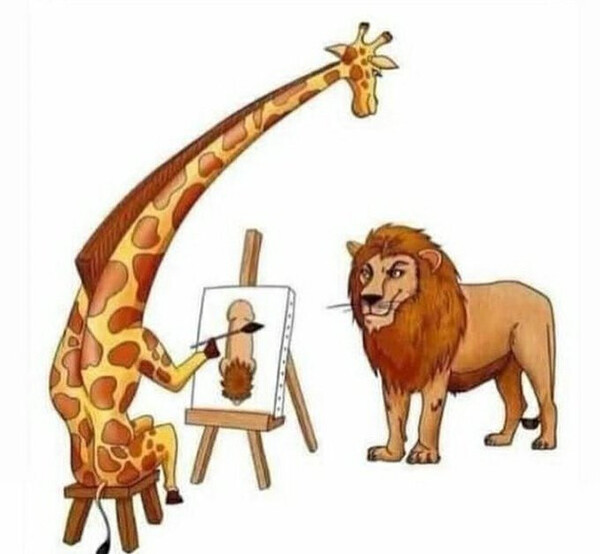
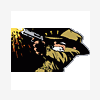
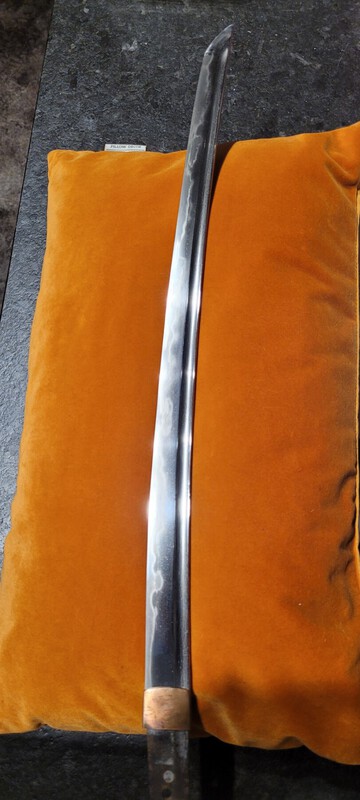

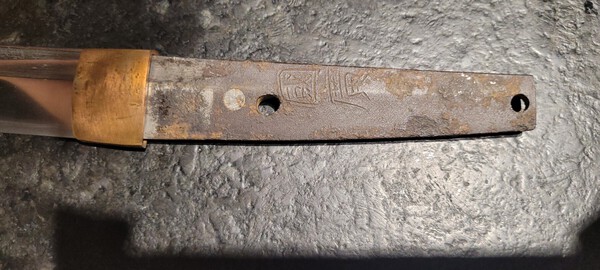

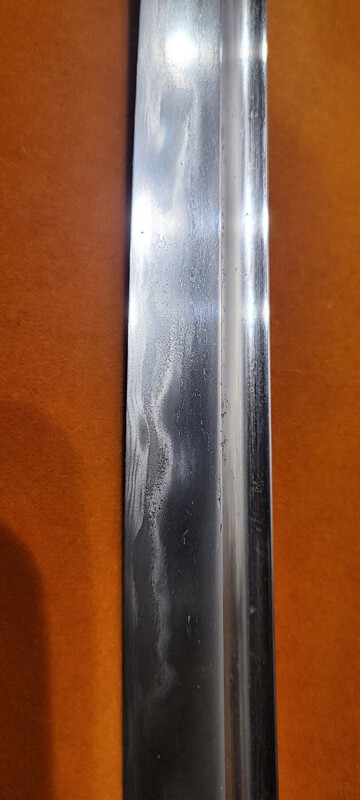

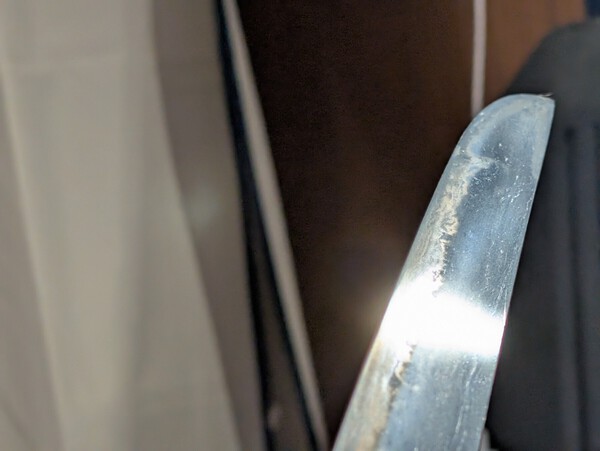
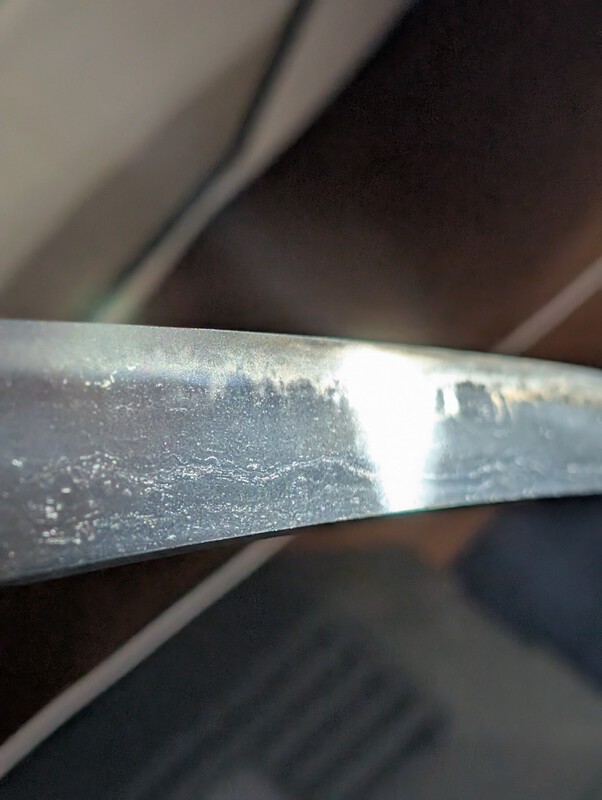

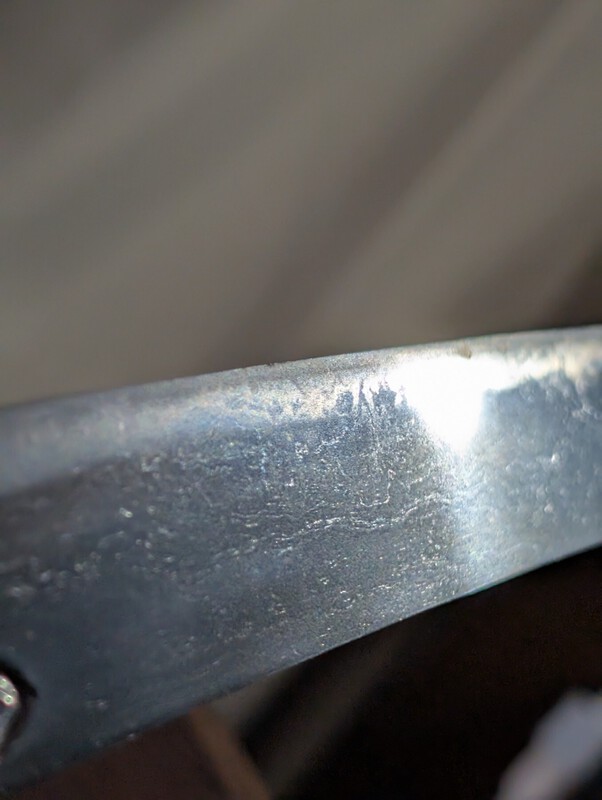



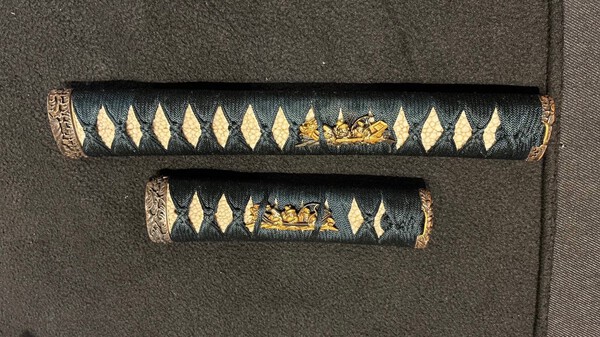
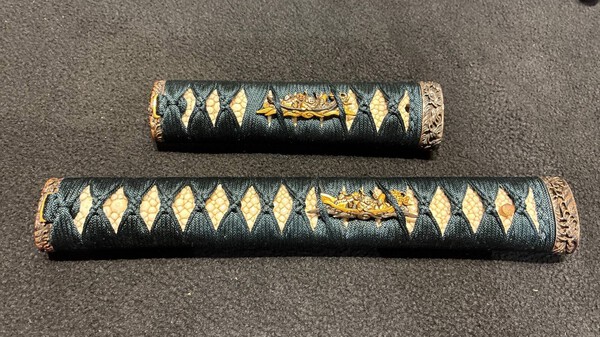

.thumb.jpeg.fad864d31e1088b137cbcec3183d285c.jpeg)
